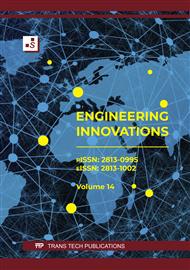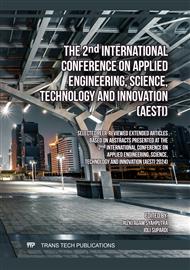p.15
p.25
p.37
p.45
p.53
p.61
p.71
p.85
p.99
Analysis of the Effect of Discharge Needs on Pesangan Hydropower Plant in Central Aceh Regency
Abstract:
The Peusangan Hydropower Plant has a power capacity of 2 x 44 MW, or 88 MW from two turbines. In the context of hydropower, turbine requirements include high efficiency, capacity, appropriate power, reliability over an extended period of time, operational flexibility, ease of maintenance, and environmental considerations such as natural habitat. Discharge requirements are a significant factor that must be considered in the planning and operation of hydropower plants. In the event that the discharge requirements are not met, the hydropower plant may be damaged and unable to operate as intended. The objective of this study was to ascertain the discharge requirements of the four sectors surrounding the river and the discharge requirements for the continued availability of the Peusangan Hydropower Plant. This research process was conducted through the analysis of MHP parameters, water needs, discharge scenarios, and zoning scenarios. The results of the analysis of the effect of discharge requirements on Peusangan Hydroelectric Power Plant indicate that the discharge requirements for the four sectors in the river are divided into three. In the 500 m zoning, the required discharge is 113.42 m³/s. In the 1 km zoning, the required discharge is 138.70 m³/s, while in the 2 km zoning, the required discharge is 138.50 m³/s. The minimum discharge requirement for the Peusangan Hydroelectric Power Plant is 138.50 m³/s. The minimum discharge requirement for Peusangan Hydroelectric Power Plant in the 500 m zoning is 199.70 m³/s, while the maximum discharge is 487.78 m³/s. In the 1 km zoning, the minimum discharge requirement is 175.43 m³/s. The maximum discharge is 463.50 m³/s, while the minimum discharge in the 2 km zoning is 174.63 m³/s, with a maximum of 462.70 m³/s. These values ensure that the discharge requirements for hydropower can be met properly.
Info:
Periodical:
Pages:
53-59
Citation:
Online since:
April 2025
Keywords:
Permissions:
Share:
Citation:



